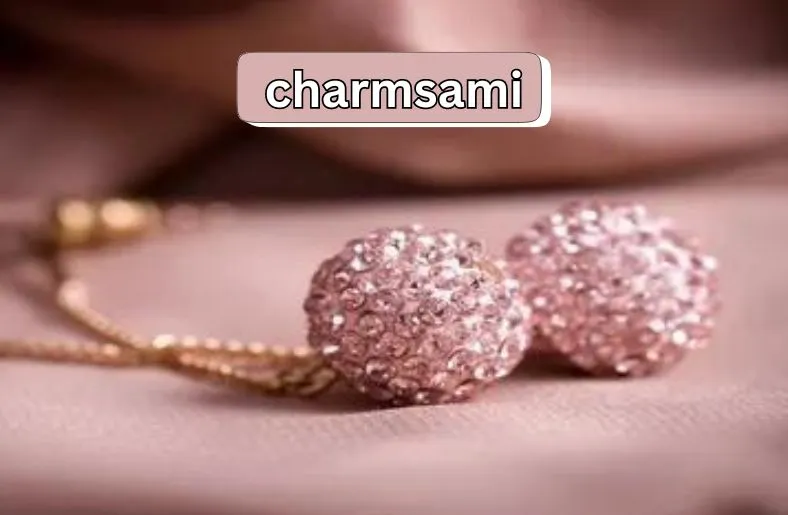Introduction
Hook: Chainiste is an intriguing art form that turns simple metal chains into extraordinary works of art. This unique craft blends creativity with metalwork to produce eye-catching pieces that stand out.
Definition: Chainiste involves using chains, chain mesh, and links in innovative ways to create distinctive jewelry, clothing, and decorative items. It’s an art form that combines traditional techniques with modern design.
Purpose: In this blog post, we will explore the origins of Chainiste, its role in fashion and decor, and what makes it special. We aim to show why Chainiste is a captivating topic, revealing its charm and artistic value.
The Origins of Chainiste
Historical Context: The art of chain-making has ancient roots, stretching back to civilizations like the Egyptians and Romans. Chains were used in jewelry and armor, showcasing technical skill and cultural significance. Throughout history, chain-making evolved, reflecting the changing tastes and technologies of different eras.
Key Figures and Milestones: Notable figures in Chainiste history include artisans from various periods who refined chain-making techniques. The 17th and 18th centuries saw the rise of specialized guilds in Europe, advancing the craft significantly. The 20th century marked a revival of interest, blending historical techniques with contemporary styles.
Revival and Modernization: Chainiste experienced a resurgence in the 1960s, driven by a renewed appreciation for handcrafted and artisanal items. Today, it combines traditional methods with modern innovations, using new materials and designs to keep the craft relevant and exciting.
The Art of Chainiste
Craftsmanship: Creating Chainiste pieces involves meticulous craftsmanship. Artisans carefully link each chain, ensuring that every piece is both functional and aesthetically pleasing. The process requires precision and skill, as each link must be perfectly aligned to achieve the desired effect.
Materials and Techniques: Chainiste artists use a variety of materials, including metals like silver, gold, and titanium. They also work with fabrics and other elements to enhance their designs. Techniques such as welding, stitching, and adhesive applications are employed to attach chains and create unique effects.
Design Innovations: Modern Chainiste designs push the boundaries of traditional metalwork. Artisans explore new patterns, incorporate gemstones, and experiment with different chain textures. These innovations help create fresh, exciting designs that stand out in the fashion and art worlds.
Chainiste in Fashion and Jewelry
Fashion Integration: Chainiste is making a significant impact in fashion, from high-end runway shows to everyday wear. Designers use chain elements to add a touch of edginess and sophistication to their collections, making Chainiste an integral part of modern fashion.
Jewelry Examples: Chainiste is particularly prominent in jewelry. Necklaces, bracelets, and earrings featuring chain elements add texture and elegance. Each piece showcases the artistry involved in Chainiste, turning simple metal links into stunning accessories.
Influence on Trends: Chainiste is shaping current fashion trends with its unique approach. By combining traditional techniques with innovative designs, Chainiste is influencing styles and inspiring new directions in the fashion industry. Its impact is seen in both high fashion and everyday apparel.
Chainiste Beyond Fashion
Home Decor: Chainiste extends beyond fashion into home décor. Chains are used creatively to enhance interior design, adding an industrial charm to various spaces. This application showcases the versatility of it and its ability to transform ordinary items into artistic statements.
Art Installations: Some artists use it techniques in large-scale installations and sculptures. These works highlight the transformative power of chains, turning them into compelling visual statements that captivate viewers and demonstrate the craft’s artistic potential.
Functional Uses: it also finds practical applications in industries like automotive and construction. The durability and strength of chains make them suitable for various functional uses, showcasing the craft’s versatility and relevance beyond art and fashion.
The Appeal of Chainiste
Artistic Expression: Chainiste appeals to both creators and collectors for its artistic potential. It offers a unique medium for personal expression, allowing artists to showcase their creativity and skill. The result is a form of art that is both beautiful and meaningful.
Unique Value: What sets Chainiste apart is its blend of traditional craftsmanship with modern design. This combination results in art that is both timeless and innovative, offering a distinctive value that differentiates it from other forms of metal and fabric art.
Personalization: it provides ample opportunities for customization. Artists and designers can tailor each piece to reflect individual tastes and preferences, making it a personal and meaningful art form. This aspect of it allows for a high degree of personal expression and creativity.
Challenges and Future of Chainiste
Challenges: Chainistes face several challenges, including sourcing high-quality materials and maintaining traditional craftsmanship standards. Balancing the demands of modern design with the intricacies of traditional techniques can be challenging but is essential for preserving the craft’s integrity.
Future Trends: The future of it looks bright, with ongoing innovations in materials and techniques. Artists and designers are constantly pushing the boundaries of what is possible, ensuring that Chainiste remains relevant and exciting in the evolving world of art and fashion.
Sustainability: it is also moving towards more sustainable practices. The use of recycled materials and eco-friendly methods is becoming increasingly important, reflecting a broader trend towards environmental responsibility in the arts and crafts sector.
Conclusion
Chainiste is more than just a craft; it’s a dynamic blend of creativity and tradition that transforms metal chains into stunning art. From its ancient origins to its modern resurgence, it continues to captivate with its innovative designs and versatile applications. Whether enhancing fashion, decor, or functional uses, it showcases the artistry and craftsmanship that make each piece unique. As the art form evolves, it embraces sustainability and pushes boundaries, ensuring its relevance in contemporary art and design. Embracing it offers a chance to explore a rich, artistic tradition while expressing individuality and creativity.





